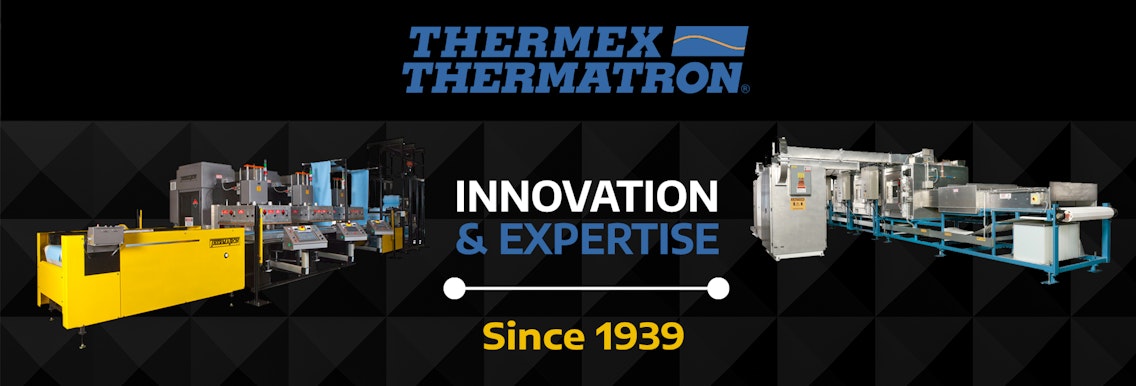The Unique Characteristics & Advantages of RF & MW Technologies
Thermex-Thermatron Systems
At Thermex-Thermatron, we’ve pioneered advancements in Microwave (MW) and Radio Frequency (RF) heating technologies. Across multiple industries, both of these technologies can be credited for greater efficiency, quality, and availability of items the average person encounters. Whether you are aboard an airplane, driving a car, or administering an IV, you can thank MW and RF technology. While both technologies utilize the electromagnetic spectrum, there are unique characteristics of both that provide targeted advantages in industrial applications.

RF Technology
Radio Frequency refers to a range of frequency (amount/time) or oscillation, of electromagnetic radiation waves. This is measured in units called Hertz (Hz). Electromagnetic waves at a frequency from approximately 20kHz to 300GHz are classified as RF (Radio Frequency). Frequencies approaching or greater than 1GHz are commonly referred to as Microwaves. RF has many practical applications, such as broadcasting AM/FM radio and heating. It is precisely the heating qualities that are developed for industrial applications at Thermex-Thermatron.
When using RF heating systems, manufacturing processes are able to apply heat that is fast, consistent, energy-efficient, and effective on objects of various thickness. The quality heat this provides is a result of the dielectric properties of the object being heated, which affects the RF waves when conditions are kept consistent. This effect is particularly beneficial for industrial manufacturing processes that include drying, curing, baking, welding, fusing, and more. Applications are common with polymer and fiber materials, such as PVC, polyurethane, fabric, composites, and other similar materials.

MW Technology
Microwave technology is similar to RF technology in that it occupies a range of electromagnetic radiation. In fact, the electromagnetic range of microwaves is 800Mhz to 300 GHz, or the upper range of Radio Frequencies. This subset can be described by two smaller ranges that constitute this upper range, UHF (Ultra High Frequency) and EHF (Extremely High Frequency). This range of radio waves has a wide variety of applications, such as Wi-Fi, data transmission, and heating materials. It is specifically the heating of materials that is developed and harnessed into powerful heating solutions at Thermex-Thermatron.
Using electromagnetic waves, microwave heating causes materials to heat by affecting the dipolar molecules, causing them to oscillate, and thus produce heat. This allows a uniform heating quality and is especially effective for heating non-conducting materials that meet certain physical, chemical, and electrical property requirements. In industrial manufacturing, this can include applications such as ceramics, composites, thermoset molding, sand cores, and other non-conductive materials.

Thermex-Thermatron is an industry leader in building industrial systems to meet an array of heating process needs. Our RF and MW advancements have allowed manufacturers and engineers across aerospace, automotive, medical, and packaging industries to enhance their processes with greater efficiency, quality, and safety.
For more information, please visit our new website - thermex-thermatron.com.
For Thermex and Thermatron inquiries, contact our Director of Sales, Dean Mancuso (Sales@thermex-thermatron.com; 502/916-8972 or 502/243-5636).
For FIAB and Oteman inquiries, contact our Director of Business Development, Traci Evling (Traci@thermex-thermatron.com; 502/916-8981 or 904/662-2169).


